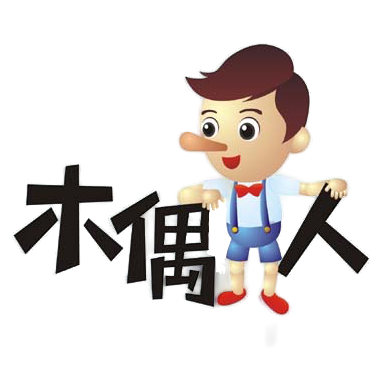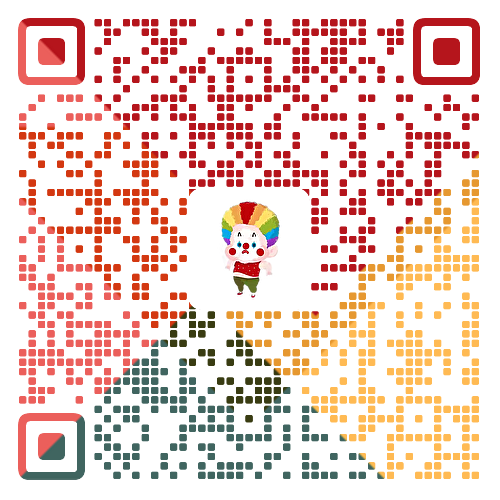–、 安装 Vue
1. 本地引用
安装 — Vue.js (vuejs.org)
1
| <script src="../lib/vue.js"></script>
|
2. 外部引用
1
| <script src="https://cdn.jsdelivr.net/npm/vue@2.6.14/dist/vue.js"></script>
|
二、 模板语法
1. 插值语法
语法:
1. 文本
1
2
3
4
5
6
7
8
9
10
| <div id="app">{{ message }}</div>
<script>
var app = new Vue({
el: "#app",
data: {
message: "Hello Vue!",
},
});
</script>
|
2. 表达式
1
2
3
4
5
| <div id="app">
{{ number + 1 }}
{{ ok ? 'YES' : 'NO' }}
{{ message.split('').reverse().join('') }}
</div>
|
2. 指令语法
- 功能:用于解析标签(包括:标签属性、标签体内容、绑定事件…..)。
- 举例:v-bind:href=”xxx” 或 简写为 :href=”xxx”,
- xxx 同样要写 js 表达式,且可以直接读取到 data 中的所有属性。
- 备注:Vue 中有很多的指令,且形式都是:v-????
1
2
3
4
5
6
7
8
9
10
11
12
13
14
15
16
17
18
19
20
21
22
23
24
25
| <div id="root">
<h1>插值语法</h1>
<h3>你好,{{name}}</h3>
<hr />
<h1>指令语法</h1>
<a v-bind:href="school.url.toUpperCase()" x="hello"
>点我去{{school.name}}学习1</a
>
<a :href="school.url" x="hello">点我去{{school.name}}学习2</a>
</div>
<script type="text/javascript">
Vue.config.productionTip = false;
new Vue({
el: "#root",
data: {
name: "jack",
school: {
name: "尚硅谷",
url: "http://www.atguigu.com",
},
},
});
</script>
|
3. el 和 data 的两种写法
1. el 的两种写法
1
2
3
4
5
6
7
8
9
10
11
|
const v = new Vue({
el: "#root",
data: {
name: "尚硅谷",
},
});
v.$mount("#root");
|
2. data 的两种写法
1
2
3
4
5
6
7
8
9
10
11
12
13
14
15
16
|
new Vue({
el:'#root',
data:{
name:'尚硅谷'
}
data(){
console.log('@@@',this)
return{
name:'尚硅谷'
}
}
})
|
三、 数据代理
- Vue 中的数据代理
- 通过 vm 对象 来代理 data 对象 中属性的操作(读/写)
- Vue 中数据代理的好处
- 更加方便的操作 data 中的数据
- 基本原理
- 通过 Object.defineProperty() 把 data 对象 中所有属性添加到 vm 上。
- 为每一个添加到 vm 上的属性,都指定一个 getter/setter。
- 在 getter/setter 内部去操作(读/写)data 中对应的属性。
1
2
3
4
5
6
7
8
9
10
11
12
13
14
15
16
| <div id="root">
<h2>学校名称:{{name}}</h2>
<h2>学校地址:{{address}}</h2>
</div>
<script type="text/javascript">
Vue.config.productionTip = false;
const vm = new Vue({
el: "#root",
data: {
name: "尚硅谷",
address: "宏福科技园",
},
});
</script>
|
1. 动态单向绑定(v-bind)
v-bind : 数据只能从 data 流向页面
v-bind 可以简写为 :
1
2
3
4
5
|
<a v-bind:href="url">...</a>
<a :href="url">...</a>
|
2. 动态双向绑定(v-model)
v-model : 数据不仅能从 data 流向页面,还可以从页面流向 data
v-model : 双向绑定一般都应用在表 单类元素 上(如:input、select 等)
v-model:value 可以简写为 v-model,因为 v-model 默认收集的就是value值。
1
2
3
4
5
|
<input v-model:value="message">
<input v-model="message">
|
例如:
1
2
3
4
5
6
7
8
9
10
11
12
13
| <div class="box">
<input v-model="message" placeholder="edit me" />
<p>Message is: {{ message }}</p>
</div>
<script>
new Vue({
el: ".box",
data: {
message: "hello",
},
});
</script>
|
四、事件处理 v-on:
1. 事件绑定
使用 v-on 来绑定事件
v-on 可以简写为 @
注意:
- 使用 v-on:xxx 或 @xxx 绑定事件,其中 xxx 是事件名;
- 事件的回调需要配置在
methods 对象中,最终会在 vm 上; - methods 中配置的函数,不要用 箭头函数!否则 this 就不是 vm 了;
- methods 中配置的函数,都是被 Vue 所管理的函数,this 的指向是 vm 或 组件实例对象;
@click="demo" 和 @click="demo($event)" 效果一致,但后者可以传参;*
1
2
3
4
5
6
7
8
9
10
11
12
13
14
15
16
17
18
19
20
21
22
23
24
25
26
27
28
29
30
| <div id="root">
<h2>欢迎来到{{name}}学习</h2>
// 原始写法
<button v-on:click="showInfo">点我提示信息</button>
// 简写
<button @click="showInfo1">点我提示信息1(不传参)</button>
<button @click="showInfo2($event,66)">点我提示信息2(传参)</button>
</div>
<script type="text/javascript">
Vue.config.productionTip = false;
const vm = new Vue({
el: "#root",
data: {
name: "尚硅谷",
},
methods: {
showInfo1(event) {
alert("同学你好!");
},
showInfo2(event, number) {
console.log(event, number);
alert("同学你好!!");
},
},
});
</script>
|
2. 事件修饰符
Vue 中的事件修饰符:
prevent:阻止默认事件(常用);stop:阻止事件冒泡(常用);once:事件只触发一次(常用);capture:使用事件的捕获模式;self:只有 event.target 是当前操作的元素时才触发事件;passive:事件的默认行为立即执行,无需等待事件回调执行完毕;
1
2
3
4
5
6
7
8
9
10
11
12
13
14
15
16
17
18
19
20
21
22
23
24
25
26
27
28
29
30
31
32
33
34
35
36
37
38
39
40
41
42
43
44
45
46
47
48
49
50
51
52
53
54
55
56
57
58
59
60
61
62
| <div id="root">
<h2>欢迎来到{{name}}学习</h2>
<a href="http://www.atguigu.com" @click.prevent="showInfo">点我提示信息</a>
<div class="demo1" @click="showInfo">
<button @click.stop="showInfo">点我提示信息</button>
<a href="http://www.atguigu.com" @click.prevent.stop="showInfo"
>点我提示信息</a
>
</div>
<button @click.once="showInfo">点我提示信息</button>
<div class="box1" @click.capture="showMsg(1)">
div1
<div class="box2" @click="showMsg(2)">div2</div>
</div>
<div class="demo1" @click.self="showInfo">
<button @click="showInfo">点我提示信息</button>
</div>
<ul @wheel.passive="demo" class="list">
<li>1</li>
<li>2</li>
<li>3</li>
<li>4</li>
</ul>
</div>
<script type="text/javascript">
Vue.config.productionTip = false;
new Vue({
el: "#root",
data: {
name: "尚硅谷",
},
methods: {
showInfo(e) {
alert("同学你好!");
},
showMsg(msg) {
console.log(msg);
},
demo() {
for (let i = 0; i < 100000; i++) {
console.log("#");
}
console.log("累坏了");
},
},
});
</script>
|
3. 键盘事件
Vue 中常用的按键别名:
| 按键 | 别名 |
| :—: | :————————————————-: |
| 回车 | enter |
| 删除 | delete (捕获“删除”和“退格”键) |
| 退出 | esc |
| 空格 | space |
| 换行 | tab (特殊,必须配合 keydown 去使用) |
| 上 | up |
| 下 | down |
| 左 | left |
| 右 | right |
Vue 未提供别名的按键,可以使用按键原始的 key 值去绑定,
- 如果是多个单词组成的按键名,需要将所有单词全部小写,并且用
- 隔开 - 例如: CapsLock(大写键),需要写成 caps-lock
系统修饰键(用法特殊):ctrl、alt、shift、meta
- 配合 keyup 使用:按下修饰键的同时,再按下其他键,随后释放其他键,事件才被触发。
- .配合 keydown 使用:正常触发事件。
也可以使用 keyCode 去指定具体的按键(不推荐)
Vue.config.keyCodes.自定义键名 = 键码,可以去定制按键别名*
1
2
3
4
5
6
7
8
9
10
11
12
13
14
15
16
17
18
19
20
21
22
23
24
| <div id="root">
<h2>欢迎来到{{name}}学习</h2>
<input type="text" placeholder="按下回车提示输入" @keydown.huiche="showInfo">
</div>
<script type="text/javascript">
Vue.config.productionTip = false
Vue.config.keyCodes.huiche = 13
new Vue({
el:'#root',
data:{
name:'尚硅谷'
},
methods: {
showInfo(e){
console.log(e.key,e.keyCode)
console.log(e.target.value)
}
},
})
</script>
|
五、 计算属性(computed)
计算属性 需要写在 computed 中
定义:要用的属性不存在,要通过已有属性计算得来。
原理:底层借助了 Objcet.defineproperty 方法提供的getter和setter
get 函数 执行时间:
- 初次读取时会执行一次
- 当依赖的数据发生改变时会被再次调用
优势:与 methods 实现相比,内部有缓存机制(复用),效率更高,调试方便。
注意:
- 计算属性最终会出现在 vm 上,直接读取使用即可。
- 如果计算属性要被修改,那必须写 set 函数去响应修改,且 set 中要引起计算时依赖的数据发生改变。
1
2
3
4
5
6
7
8
9
10
11
12
13
14
15
16
17
18
19
20
21
22
23
24
25
26
27
28
29
30
31
32
33
34
35
36
37
| <div id="root">
姓:<input type="text" v-model="firstName"> <br/><br/>
名:<input type="text" v-model="lastName"> <br/><br/>
全名:<span>{{fullName}}</span> <br/><br/>
</div>
<script type="text/javascript">
Vue.config.productionTip = false
const vm = new Vue({
el:'#root',
data:{
firstName:'张',
lastName:'三',
},
computed:{
fullName:{
get(){
console.log('get被调用了')
return this.firstName + '-' + this.lastName
},
set(value){
const arr = value.split('-')
this.firstName = arr[0]
this.lastName = arr[1]
}
}
fullName(){
return this.firstName + '-' + this.lastName
}
}
})
</script>
|
六、 监视属性 (watch)
监视属性 需要写在 watch 中
immediate: true 运行时立即执行,默认为 false(关)
deep:true : 深度监视开关,默认为 false(关)
监视属性 watch:
- 当被监视的属性 变化 时, 回调函数 自动调用 , 进行相关操作
- 监视的属性必须存在,才能进行监视!!
- 监视的两种写法:
- new Vue 时传入 watch 配置
- 通过 vm.$watch 监视
深度监视 (deep:true):
- Vue 中的 watch 默认 只监视对象,不监测 对象内部 值的改变(一层)。
- 配置
deep:true 可以 监测 对象内部 值改变(多层)。
注意:
- Vue 自身可以监测对象内部值的改变,但 Vue 提供的 watch 默认不可以!
- 使用 watch 时根据数据的具体结构,决定是否采用深度监视。
代码示例
1
2
3
4
5
6
7
8
9
10
11
12
13
14
15
16
17
18
19
20
21
22
23
24
25
26
27
28
29
30
31
32
33
34
35
36
37
38
39
40
41
42
43
44
45
46
47
48
49
50
51
52
| <!DOCTYPE html>
<html>
<head>
<meta charset="UTF-8" />
<title>天气案例_监视属性_简写</title>
<script type="text/javascript" src="../js/vue.js"></script>
</head>
<body>
<div id="root">
<br>
<h2>今天天气很{{info}}</h2> <br>
<button @click="changeWeather">切换天气</button>
</div>
</body>
<script type="text/javascript">
Vue.config.productionTip = false
const vm = new Vue({
el:'#root',
data:{
isHot:true,
},
computed:{
info(){
return this.isHot ? '炎热' : '凉爽'
}
},
methods: {
changeWeather(){
this.isHot = !this.isHot
}
},
watch:{
isHot:{
handler(newValue,oldValue){
console.log('isHot被修改了',newValue,oldValue)
}
},
isHot(newValue,oldValue){
console.log('isHot被修改了',newValue,oldValue,this)
}
}
})
</script>
</html>
|
代码示例
1
2
3
4
5
6
7
8
9
10
11
12
13
14
15
16
17
18
19
20
21
22
23
24
25
26
27
28
29
30
31
32
33
34
35
36
37
38
39
40
41
42
43
44
45
46
47
48
49
50
51
52
53
54
55
56
57
58
59
60
61
62
63
64
65
66
67
68
69
70
71
72
73
74
75
76
77
78
79
80
81
82
83
84
85
86
87
88
89
90
91
92
93
94
95
96
97
98
99
| <!DOCTYPE html>
<html>
<head>
<meta charset="UTF-8" />
<title>绑定样式</title>
<style>
.basic{
width: 400px;
height: 100px;
border: 1px solid black;
}
.happy{
border: 4px solid red;;
background-color: #ffff00a4;
background: linear-gradient(30deg,yellow,pink,orange,yellow);
}
.sad{
border: 4px dashed #02c502;
background-color: gray;
}
.normal{
background-color: skyblue;
}
.atguigu1{
background-color: yellowgreen;
}
.atguigu2{
font-size: 30px;
text-shadow:2px 2px 10px red;
}
.atguigu3{
border-radius: 20px;
}
</style>
<script type="text/javascript" src="../js/vue.js"></script>
</head>
<body>
<div id="root">
<div class="basic" :class="mood" @click="changeMood">{{name}}</div> <br/><br/>
<div class="basic" :class="classArr">{{name}}</div> <br/><br/>
<div class="basic" :class="classObj">{{name}}</div> <br/><br/>
<div class="basic" :style="styleObj">{{name}}</div> <br/><br/>
<div class="basic" :style="styleArr">{{name}}</div>
</div>
</body>
<script type="text/javascript">
Vue.config.productionTip = false
const vm = new Vue({
el:'#root',
data:{
name:'尚硅谷',
mood:'normal',
classArr:['atguigu1','atguigu2','atguigu3'],
classObj:{
atguigu1:false,
atguigu2:false,
},
styleObj:{
fontSize: '40px',
color:'red',
},
styleObj2:{
backgroundColor:'orange'
},
styleArr:[
{
fontSize: '40px',
color:'blue',
},
{
backgroundColor:'gray'
}
]
},
methods: {
changeMood(){
const arr = ['happy','sad','normal']
const index = Math.floor(Math.random()*3)
this.mood = arr[index]
}
},
})
</script>
</html>
|
八、 条件渲染
v-if 和 v-else-if 和 v-else : 根据条件判断元素是否显示(不展示时元素直接删除)
1
2
3
4
| <div v-if="n === 1">Angular</div>
<div v-else-if="n === 2">React</div>
<div v-else-if="n === 3">Vue</div>
<div v-else>哈哈</div>
|
适用于:切换频率较低的场景。
注意:v-if 可以和 v-else-if、v-else 一起使用,但要求结构不能被“打断”。
v-show : 根据条件判断元素是否显示(不显示时,display:none 隐藏)
1
2
| <h2 v-show="false">欢迎来到{{name}}</h2>
<h2 v-show="1 === 1">欢迎来到{{name}}</h2>
|
适用于:切换频率较高的场景。
特点:不展示的 DOM 元素未被移除,仅仅是使用样式隐藏掉
注意:使用 v-if 的时,元素可能无法获取到,而使用 v-show 一定可以获取到。
九、 列表渲染
1. v-for 指令的 key
语法:
1
| v-for="(item, index) in xxx" :key="xxx"
|
说明:
- key 是虚拟 DOM 对象的标识,vue 可以根据 key 准确找到变化的元素,构建新的虚拟 DOM ,并渲染到 真实 DOM 中
- 最好使用每条数据的唯一标识作为 key, 比如 id、手机号、身份证号、学号等唯一值
案例 —- 筛选排序
代码示例
1
2
3
4
5
6
7
8
9
10
11
12
13
14
15
16
17
18
19
20
21
22
23
24
25
26
27
28
29
30
31
32
33
34
35
36
37
38
39
40
41
42
43
44
45
46
47
48
49
50
51
52
53
54
55
56
57
| <!DOCTYPE html>
<html>
<head>
<meta charset="UTF-8" />
<title>列表排序</title>
<script type="text/javascript" src="../js/vue.js"></script>
</head>
<body>
<div id="root">
<h2>人员列表</h2>
<input type="text" placeholder="请输入名字" v-model="keyWord">
<button @click="sortType = 2">年龄升序</button>
<button @click="sortType = 1">年龄降序</button>
<button @click="sortType = 0">原顺序</button>
<ul>
<li v-for="(p,index) of filPerons" :key="p.id">
{{p.name}}-{{p.age}}-{{p.sex}}
<input type="text">
</li>
</ul>
</div>
</body>
<script type="text/javascript">
Vue.config.productionTip = false
new Vue({
el:'#root',
data:{
keyWord:'',
sortType:0,
persons:[
{id:'001',name:'马冬梅',age:30,sex:'女'},
{id:'002',name:'周冬雨',age:31,sex:'女'},
{id:'003',name:'周杰伦',age:18,sex:'男'},
{id:'004',name:'温兆伦',age:19,sex:'男'}
]
},
computed:{
filPerons(){
const arr = this.persons.filter((p)=>{
return p.name.indexOf(this.keyWord) !== -1
})
if(this.sortType){
arr.sort((p1,p2)=>{
return this.sortType === 1 ? p2.age-p1.age : p1.age-p2.age
})
}
return arr
}
}
})
</script>
</html>
|
2. 监视数据
通过 setter 实现监视,且要在 new Vue 时就传入要监测的数据。
- 对象中 后追加的属性,Vue 默认不做响应式处理
- 如需给后添加的属性做响应式,请使用如下 API:
1
2
| Vue.set(target,propertyName/index,value)
或 vm.$set(target,propertyName/index,value)
|
在 Vue 修改数组中的某个元素一定要用如下方法:
- 使用这些 API:push()、pop()、shift()、unshift()、splice()、sort()、reverse()
- Vue.set() 或 vm.$set()
注意:
Vue.set() 和 vm.$set() 不能给 vm 或 vm 的根数据对象 添加属性!!!
案例 —- 条件渲染
代码示例
1
2
3
4
5
6
7
8
9
10
11
12
13
14
15
16
17
18
19
20
21
22
23
24
25
26
27
28
29
30
31
32
33
34
35
36
37
38
39
40
41
42
43
44
45
46
47
48
49
50
51
52
53
54
55
56
57
58
59
60
61
62
63
64
65
66
67
68
69
70
71
72
73
74
75
76
77
78
79
80
81
82
83
84
85
86
87
88
| <!DOCTYPE html>
<html>
<head>
<meta charset="UTF-8" />
<title>总结数据监视</title>
<style>
button{
margin-top: 10px;
}
</style>
<script type="text/javascript" src="../js/vue.js"></script>
</head>
<body>
<div id="root">
<h1>学生信息</h1>
<button @click="student.age++">年龄+1岁</button> <br/>
<button @click="addSex">添加性别属性,默认值:男</button> <br/>
<button @click="student.sex = '未知' ">修改性别</button> <br/>
<button @click="addFriend">在列表首位添加一个朋友</button> <br/>
<button @click="updateFirstFriendName">修改第一个朋友的名字为:张三</button> <br/>
<button @click="addHobby">添加一个爱好</button> <br/>
<button @click="updateHobby">修改第一个爱好为:开车</button> <br/>
<button @click="removeSmoke">过滤掉爱好中的抽烟</button> <br/>
<h3>姓名:{{student.name}}</h3>
<h3>年龄:{{student.age}}</h3>
<h3 v-if="student.sex">性别:{{student.sex}}</h3>
<h3>爱好:</h3>
<ul>
<li v-for="(h,index) in student.hobby" :key="index">
{{h}}
</li>
</ul>
<h3>朋友们:</h3>
<ul>
<li v-for="(f,index) in student.friends" :key="index">
{{f.name}}--{{f.age}}
</li>
</ul>
</div>
</body>
<script type="text/javascript">
Vue.config.productionTip = false
const vm = new Vue({
el:'#root',
data:{
student:{
name:'tom',
age:18,
hobby:['抽烟','喝酒','烫头'],
friends:[
{name:'jerry',age:35},
{name:'tony',age:36}
]
}
},
methods: {
addSex(){
this.$set(this.student,'sex','男')
},
addFriend(){
this.student.friends.unshift({name:'jack',age:70})
},
updateFirstFriendName(){
this.student.friends[0].name = '张三'
},
addHobby(){
this.student.hobby.push('学习')
},
updateHobby(){
this.$set(this.student.hobby,0,'开车')
},
removeSmoke(){
this.student.hobby = this.student.hobby.filter((h)=>{
return h !== '抽烟'
})
}
}
})
</script>
</html>
|
九、 收集表单数据
1
| <input type="radio" name="sex" v-model="userInfo.sex" value="male">
|
v-model 的三个修饰符:
lazy:失去焦点再收集数据
number:输入字符串转为有效的数字
trim:输入首尾空格过滤
案例 —- 收集表单数据
代码示例
1
2
3
4
5
6
7
8
9
10
11
12
13
14
15
16
17
18
19
20
21
22
23
24
25
26
27
28
29
30
31
32
33
34
35
36
37
38
39
40
41
42
43
44
45
46
47
48
49
50
51
52
53
54
55
56
57
58
59
60
61
62
63
64
65
66
67
68
69
70
71
72
73
74
75
76
77
78
79
80
| <!DOCTYPE html>
<html>
<head>
<meta charset="UTF-8" />
<title>收集表单数据</title>
<script type="text/javascript" src="../js/vue.js"></script>
</head>
<body>
<div id="root">
<form @submit.prevent="demo">
账号:<input type="text" v-model.trim="userInfo.account" /> <br /><br />
密码:<input type="password" v-model="userInfo.password" /> <br /><br />
年龄:<input type="number" v-model.number="userInfo.age" /> <br /><br />
性别: 男<input
type="radio"
name="sex"
v-model="userInfo.sex"
value="male"
/>
女<input
type="radio"
name="sex"
v-model="userInfo.sex"
value="female"
/>
<br /><br />
爱好: 学习<input
type="checkbox"
v-model="userInfo.hobby"
value="study"
/>
打游戏<input type="checkbox" v-model="userInfo.hobby" value="game" />
吃饭<input type="checkbox" v-model="userInfo.hobby" value="eat" />
<br /><br />
所属校区
<select v-model="userInfo.city">
<option value="">请选择校区</option>
<option value="beijing">北京</option>
<option value="shanghai">上海</option>
<option value="shenzhen">深圳</option>
<option value="wuhan">武汉</option>
</select>
<br /><br />
其他信息:
<textarea v-model.lazy="userInfo.other"></textarea> <br /><br />
<input type="checkbox" v-model="userInfo.agree" />阅读并接受<a
href="http://www.atguigu.com"
>《用户协议》</a
>
<button>提交</button>
</form>
</div>
</body>
<script type="text/javascript">
Vue.config.productionTip = false;
new Vue({
el: "#root",
data: {
userInfo: {
account: "",
password: "",
age: 0,
sex: "female",
hobby: [],
city: "beijing",
other: "",
agree: "",
},
},
methods: {
demo() {
console.log(JSON.stringify(this.userInfo));
},
},
});
</script>
</html>
|
十、 过滤器 filter
filters : 对要显示的数据进行特定的格式化处理后再显示
day.js 中文官网
语法:
1
2
| // 注册过滤器 Vue.filter(name, callback) 或 new Vue{filters:{}} // 使用过滤器 {{
xxx | 过滤器名}} 或 v-bind:属性 = "xxx | 过滤器名"
|
注意:
- 过滤器也也可以接收额外参数,多个过滤器也可以串联
- 过滤器没有改变原来的数据,而是产生了新的对应的数据
全局过滤器:
1
2
3
| Vue.filter("mySlice", function (value) {
return value.slice(0, 4);
});
|
局部过滤器:
1
2
3
4
5
| filters:{
timeFormater(value,str='YYYY年MM月DD日 HH:mm:ss'){
return dayjs(value).format(str)
}
}
|
代码示例
1
2
3
4
5
6
7
8
9
10
11
12
13
14
15
16
17
18
19
20
21
22
23
24
25
26
27
28
29
30
31
32
33
34
35
36
37
38
39
40
41
42
43
44
45
46
47
48
49
50
51
52
53
54
55
56
57
58
59
60
61
62
| <!DOCTYPE html>
<html>
<head>
<meta charset="UTF-8" />
<title>过滤器</title>
<script type="text/javascript" src="../js/vue.js"></script>
<script type="text/javascript" src="../js/dayjs.min.js"></script>
</head>
<body>
<div id="root">
<h2>显示格式化后的时间</h2>
<h3>现在是:{{fmtTime}}</h3>
<h3>现在是:{{getFmtTime()}}</h3>
<h3>现在是:{{time | timeFormater}}</h3>
<h3>现在是:{{time | timeFormater('YYYY_MM_DD') | mySlice}}</h3>
<h3 :x="msg | mySlice">尚硅谷</h3>
</div>
<div id="root2">
<h2>{{msg | mySlice}}</h2>
</div>
</body>
<script type="text/javascript">
Vue.config.productionTip = false
Vue.filter('mySlice',function(value){
return value.slice(0,4)
})
new Vue({
el:'#root',
data:{
time:1621561377603,
msg:'你好,尚硅谷'
},
computed: {
fmtTime(){
return dayjs(this.time).format('YYYY年MM月DD日 HH:mm:ss')
}
},
methods: {
getFmtTime(){
return dayjs(this.time).format('YYYY年MM月DD日 HH:mm:ss')
}
},
filters:{
timeFormater(value,str='YYYY年MM月DD日 HH:mm:ss'){
return dayjs(value).format(str)
}
}
})
</script>
</html>
|
十一、 内置指令
| 指令 | 说明 |
|---|
v-bind | 单向动态绑定,简写 : |
v-model | 双向数据绑定 |
v-for | 遍历数组、对象、字符串 |
v-on | 绑定事件监听,简写 @ |
v-if | 条件渲染(动态控制节点是否存在 |
v-else | 条件渲染(动态控制节点是否存在) |
v-show | 条件渲染(动态控制节点是否显示) |
v-text | 向所在节点渲染文本内容(html 标签无效) |
v-html | 向所在节点渲染文本内容(html 标签有效) |
v-cloak | 防止页面展示 vue 内容,如, 没有值 |
v-once | 所在节点初次渲染后,将不再更新 |
v-pre | 跳过没有语法、指令的节点,加快编译速度 |
v-cloak :
- 本质是一个特殊属性,Vue 实例创建完毕并接管容器后,会删掉 v-cloak 属性。
- 使用 css 配合 v-cloak 可以解决网速慢时页面展示出的问题。
1
2
3
| <div id="root">
<h2 v-cloak>{{name}}</h2>
</div>
|
v-once :
- v-once 所在节点在初次动态渲染后,就视为静态内容了。
- 以后数据的改变不会引起 v-once 所在结构的更新,可以用于优化性能。
1
2
3
4
5
| <div id="root">
<h2 v-once>初始化的n值是:{{n}}</h2>
<h2>当前的n值是:{{n}}</h2>
<button @click="n++">点我n+1</button>
</div>
|
v-pre :
- 跳过其所在节点的编译过程。
- 可利用它跳过:没有使用指令语法、没有使用插值语法的节点,会加快编译。
1
2
3
4
5
| <div id="root">
<h2 v-pre>Vue其实很简单</h2>
<h2>当前的n值是:{{n}}</h2>
<button @click="n++">点我n+1</button>
</div>
|
十二、 自定义指令
自定义局部指令:
1
2
3
4
5
6
7
| new Vue({
directives:{指令名:配置对象}
})
或
new Vue({
directives{指令名:回调函数}
})
|
例:
1
2
3
4
5
6
7
8
9
10
| directives:{
'big-number'(element,binding){
element.innerText = binding.value * 10
},
big(element,binding){
console.log('big',this)
element.innerText = binding.value * 10
},
}
|
自定义全局指定:
1
2
3
| Vue.directive(指令名, 配置对象);
或;
Vue.directive(指令名, 回调函数);
|
1
2
3
4
5
6
7
8
9
10
11
12
13
14
| Vue.directive("fbind", {
bind(element, binding) {
element.value = binding.value;
},
inserted(element, binding) {
element.focus();
},
update(element, binding) {
element.value = binding.value;
},
});
|
配置对象中常用的 3 个回调:
bind:指令与元素成功绑定时调用。inserted:指令所在元素被插入页面时调用。update:指令所在模板结构被重新解析时调用。
注意:
- 指令定义时不加 v-,但使用时要加 v-;
- 指令名如果是多个单词,要使用 kebab-case 命名方式,不要用 camelCase 命名。









